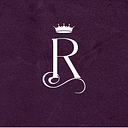Probability is so important. It is an expectation of the happening of some event. In our daily life, we often predict the outcome of several events and hear phrases like “probably it will rain today”. The rolling of dice is one of the most easiest way to learn probability.
In this blog, We will see how to easily and quickly calculate the probability.
Lets understand a few terms first.
Sample Space : It is defined as the set of all possible outcomes of a random experiment associated with it.
Probability of an event E and is written as P(E) and is defined as
P(E) = No of outcomes favorable to E / Total no. of outcomes
When a fair dice is thrown once the sample space is
S = [1,2,3,4,5,6]
Now the probability of the number on top being even would simply be,
P(E) = no of even numbers in S / total numbers in S
P(E) = 3/6
We can reduce that further to P(E) = 1/2.
Simple, eh ?
When a fair dice is thrown twice or two dices are thrown the sample space would have 36 elements
[(1,1) (1,2) (1,3) (1,4) (1,5) (1,6)
(2,1) (2,2) (2,3) (2,4) (2,5) (2,6)
(3,1) (3,2) (3,3) (3,4) (3,5) (3,6)
(4,1) (4,2) (4,3) (4,4) (4,5) (4,6)
(5,1) (5,2) (5,3) (5,4) (5,5) (5,6)
(6,1) (6,2) (6,3) (6,4) (6,5) (6,6)]
Now the probability of getting even number on the top face of both would be,
P(E) = no of elements in S where both numbers are even / total outcomes.
P(E) = 9 / 36
P(E) = 1/4
In general if , a dice a throw n times the sample space has 6^n elements.
Just remember these sample spaces and any question on dice can be easily solved.
Thank you for reading.
